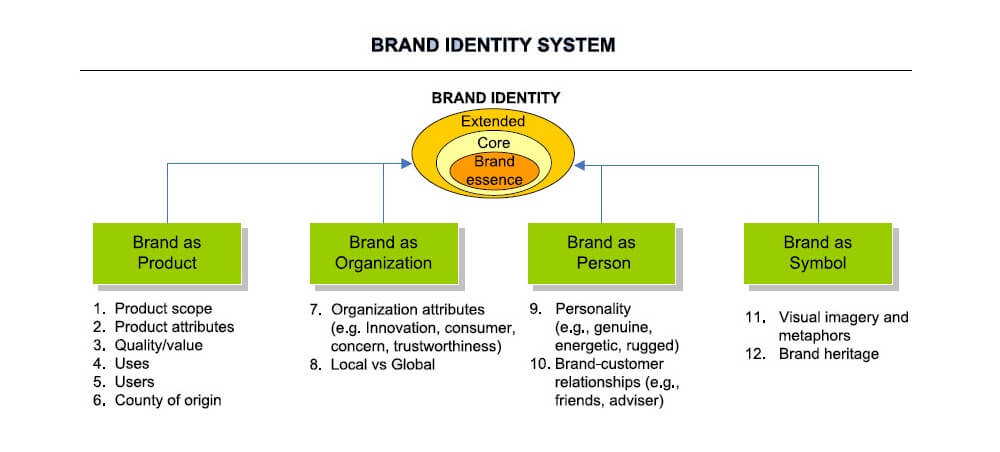
The Aaker model is a comprehensive guide on how to build brand identity. The model provides several ideas and paths for developing a brand identity and provides more charity to firms on what they should emphasize.
Purpose of Aaker Model
Compared to other similar model, the Aaker Model is more comprehensive as it provides strategists with more elements to develop campaigns. The Keller Equity Model (a similar model) on the other talks about only a fewer quadrants.
Another advantage of the Aaker Model is that firms can use it to create more brands that are expandable by adding more elements.
What is Aaker Model?
Aaker’s Brand Identity Model is a framework developed by David Aaker that is useful for understanding as well as developing brand identity. It offers unique solutions for creating a strong brand.
As per Aaker’s Brand Identity Model, brand identity consists of various dimensions that are organized around four perspectives (a product, an organization, a person and the symbol).
Its not necessary for a brand identity to depict all these perspectives. For many brands, perhaps only one perspective may be appropriate.
However, brand strategists should consider all the perspectives and use the ones that help to adequately articulate what the brand should stand for in the mind of the customers.
Various Perspectives of Brand Identity
The Aaker model suggests that a strong brand identity can be created using different elements (dimensions) that can be categorized in four categories (perspectives).
Brand Identity consists of twelve dimensions that organized around four perspectives.
Four Perspectives of Brand Identity:
Brand as a Product
This perspective focuses on the physical (tangible) benefits of the product or service offered by the brand.
It talks about the product quality, how it can be used, and even the country where it originated.
Dimensions: Product scope, attributes, quality, value, uses, country of origin.
Brand as an Organization
This perspective considers the values, culture, attributes, and actions of the organization which contributes to the brand’s identity.
These elements are attached to the brand organization: is it seen as innovative, trustworthy and so on.
Dimensions: Innovative, Trustworthy, Consumer concern. Local vs Global.
Brand as a Person
This perspective treats the brand as a real person with personality traits (such as caring, optimistic), values (customer-oriented), and a unique identity, and how it relates to its target audience.
Dimensions: Personality (Genuine, rugged, energetic), Brand-customer relationships (friends, adviser)
Brand as a Symbol
This perspective focuses on the visual and symbolic elements associated with a brand. Basically, all the branding symbols attached to a brand.
Dimensions: Visual imagery and metaphors, brand heritage.Read more on branding theory and concepts
BATheories.com is managed by a group of educators from Mumbai. We also manage the website AcademicsHQ.com. Our panel includes experienced professionals and lecturers with a background in management. BATheories is where we talk about the various business theories and models for BA (Business Administration) students.